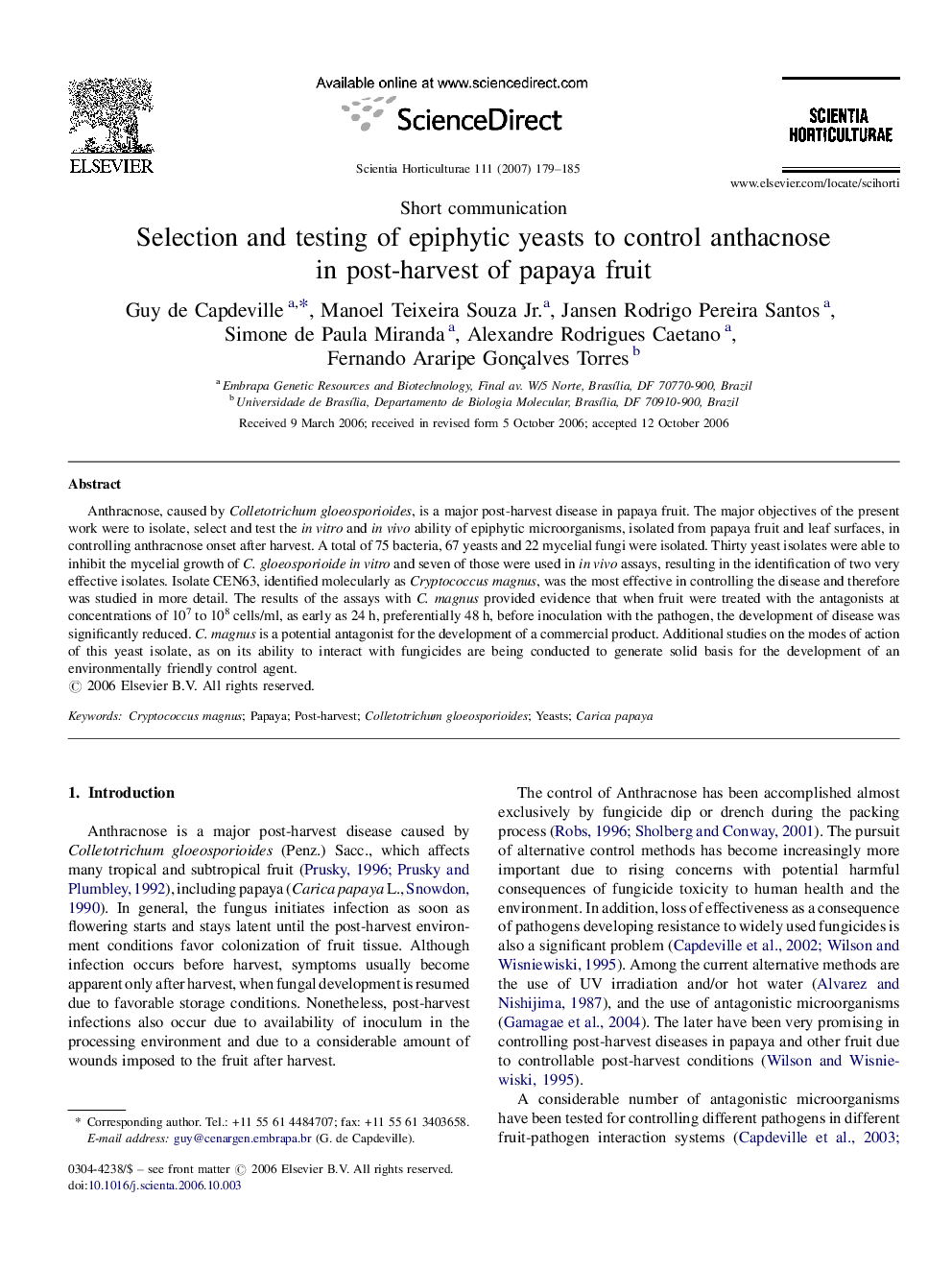| Article ID | Journal | Published Year | Pages | File Type |
|---|---|---|---|---|
| 4570108 | Scientia Horticulturae | 2007 | 7 Pages |
Anthracnose, caused by Colletotrichum gloeosporioides, is a major post-harvest disease in papaya fruit. The major objectives of the present work were to isolate, select and test the in vitro and in vivo ability of epiphytic microorganisms, isolated from papaya fruit and leaf surfaces, in controlling anthracnose onset after harvest. A total of 75 bacteria, 67 yeasts and 22 mycelial fungi were isolated. Thirty yeast isolates were able to inhibit the mycelial growth of C. gloeosporioide in vitro and seven of those were used in in vivo assays, resulting in the identification of two very effective isolates. Isolate CEN63, identified molecularly as Cryptococcus magnus, was the most effective in controlling the disease and therefore was studied in more detail. The results of the assays with C. magnus provided evidence that when fruit were treated with the antagonists at concentrations of 107 to 108 cells/ml, as early as 24 h, preferentially 48 h, before inoculation with the pathogen, the development of disease was significantly reduced. C. magnus is a potential antagonist for the development of a commercial product. Additional studies on the modes of action of this yeast isolate, as on its ability to interact with fungicides are being conducted to generate solid basis for the development of an environmentally friendly control agent.
